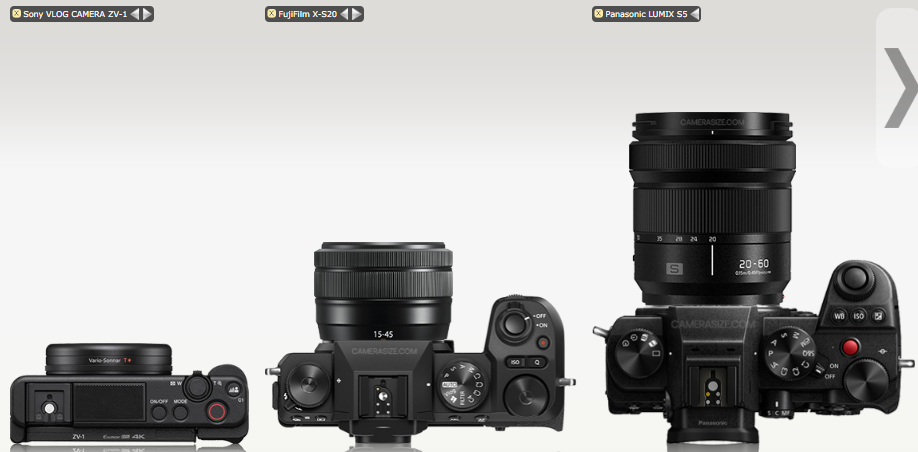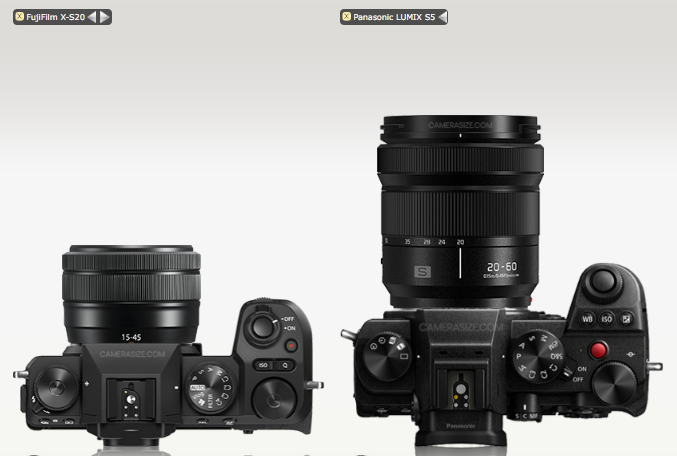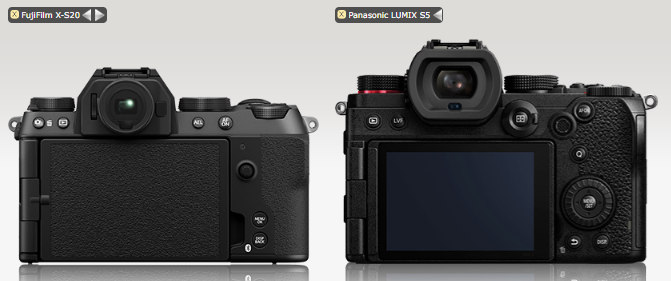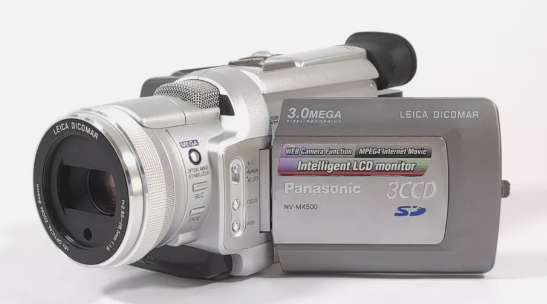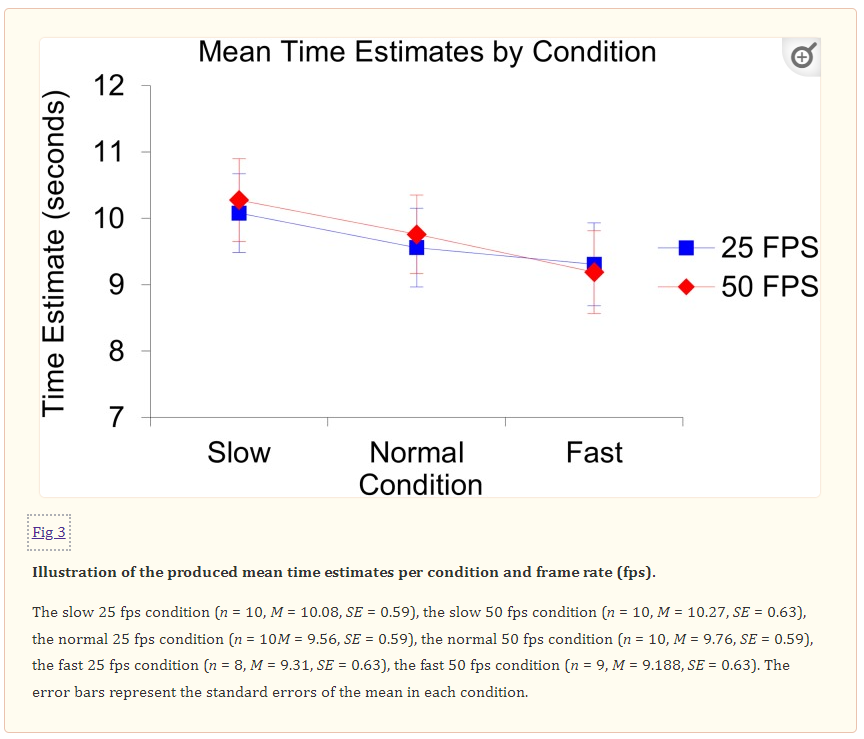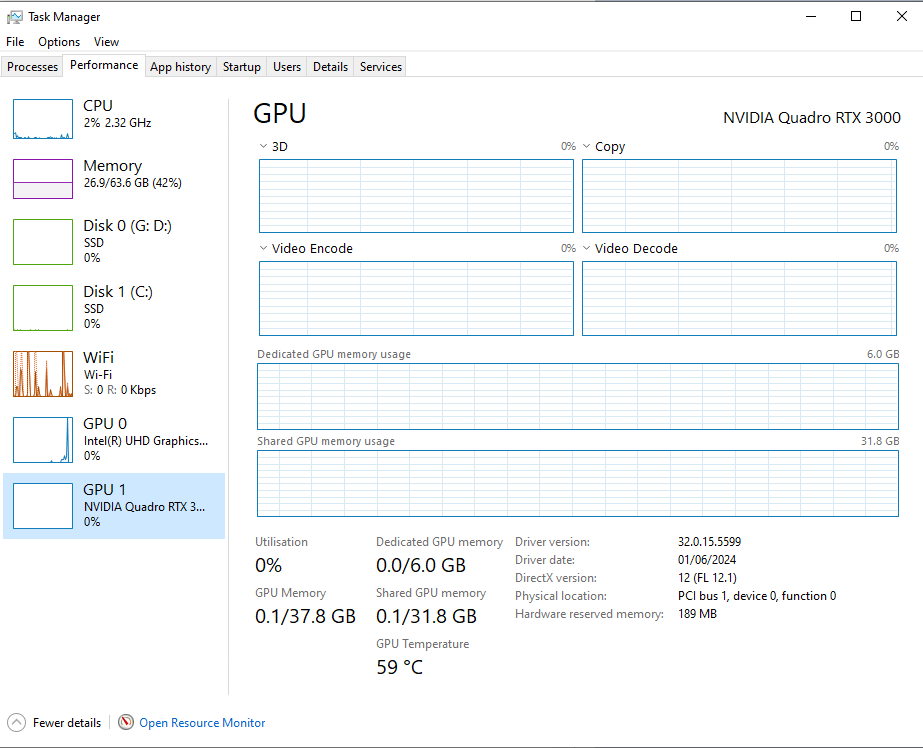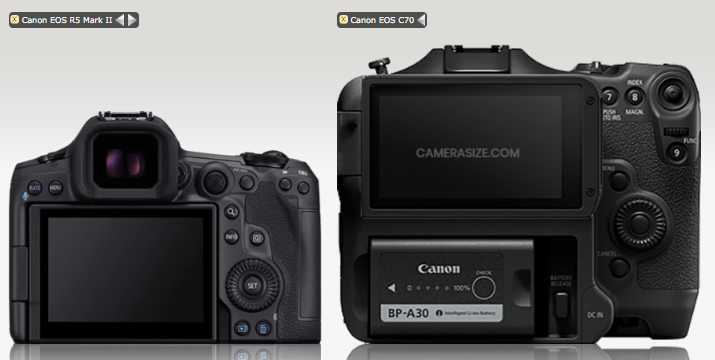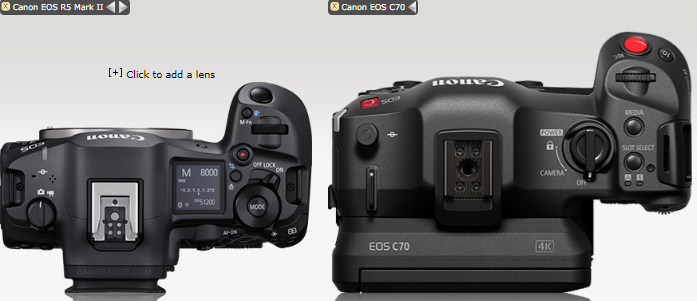
ac6000cw
Members-
Posts
689 -
Joined
-
Last visited
Content Type
Profiles
Forums
Articles
Everything posted by ac6000cw
-
Or just buy an X-S20 instead, which has IBIS and EVF.
-
Video quality is the same on both E-M1 ii and iii. Video-related differences are basically better C-AF and IBIS on the iii. Note the E-M1 ii got a major firmware upgrade in June 2019 (to rev 3.0) so if you buy one, check/update the firmware (latest version is rev 3.7). See https://support.jp.omsystem.com/en/support/imsg/digicamera/download/software/firm/e1/ for firmware details. 'OM Log400' on E-M1 ii & iii is only 8-bit, so isn't as 'gradable' as the video from modern cameras with 10-bit Log. Probably better to shoot in 'Natural' or 'Flat' (low-contrast, but not as low as OM Log). As for previewing the image before shooting, don't forget that you can connect a large-screen monitor or TV to the HDMI output of the camera, *but* that might not be available when the camera is 'tethered' to a PC.
-
I remember looking at the E-M5 ii for video some years ago (due to it having IBIS, which Pana didn't have at the time). I downloaded a few test clips from reviews, saw how bad the aliasing was and stayed with Panasonic... I think I'd agree (based on my E-M1 ii & iii versus G85 & GX85 experience), but the GH5 & G9 are at a higher level of quality. especially in 1080p. Yes, video is definitely the 'poor relation' to the stills side on Oly/OMDS cameras (even on the OM-1, which is otherwise a much improved video camera over its predecessors). I'd love to be able to reduce the sharpness in 10-bit video on the OM-1 but you can't (it's close to being over-sharpened) and have a 10-bit 'Flat' or 'Natural' picture profile available. On the other hand, the simple three-level IBIS adjustment and being able to turn on and off magnify/movie tele-converter while recording are really useful. The on-camera audio is better than the Pana G85 & GX85 (which are particularly bad)... I agree. The official 'OMSYSTEM_OM-Log400_BT.2020_to_WDR_BT.709_v1.0.cube' conversion LUT seems to produce odd colours, and I've never found any 3rd party LUTs for the OM-1. After a lot of trial-and-error (and learning about LUTs) I made my own OM-Log400 BT.2020 to BT.709 LUT which I use most of the time.
-
If you can live without 4k 50p/60p, the fixed-lens Sony ZV-1 is tiny but only goes up to 4k 30p max and the battery life is terrible (I use one as my 'pocket' video & stills camera):
-
I think the (APS-C) Fuji X-S20 is one of the smallest MILCs that can shoot 4k 50p/60p, but with a 1.18x crop (on the left, fitted with the small 15-45mm power-zoom kit lens, S5 on the right):
-
Cupboards clearout (DVX100, DX1, old camcorders topic)
ac6000cw replied to Tim Sewell's topic in Cameras
I didn't try it with any of the footage in that video, but I have tried a trial version of Topaz in the past on other 'railway' SD DV footage. Basically I found it not much better than using FFMPEG upscaling and sharpening, so I've never convinced myself to buy it. -
In the UK, I've also found Wex to be quite good for buying and selling used gear - https://www.wexphotovideo.com But for something quite niche like a Bolex D16, as others have said MPB might be more interested in it (but based on my experience, major used dealer buying prices are about half their typical selling price, depending on demand etc. for the item).
-
If a Panasonic G9 will do what you want, then at the 2nd hand prices they sell for today it's a steal - better video quality (8 and 10-bit) than any of the Olympus/OMDS cameras I've owned (E-M1 ii, E-M1 iii, OM-1), good IBIS, and 'clean' HDMI output on a full-size connector. Note it can't be powered over USB (only for battery charging), but third-party 'dummy battery' adaptors are fairly cheap - I use my G9 powered by one, connected to a projector for meetings with no overheating issues. I certainly wouldn't even think about paying $1800 for a new E-M1 ii or DC-GH5S - as MrSMW said, buy an 'as new' or 'excellent' grade used camera from a major dealer that provides a 6 or 12 month warranty and returns if you're not happy with it when it arrives. All the cameras on that Panasonic list (and the E-M1 ii, E-M1 iii and OM-1) are pro-grade cameras so even a cheaper 'well used' example should be fine - my E-M1 iii was bought 'well used' from a dealer, with some deep scrape marks and a couple of (easily replaced) missing port covers, but it works perfectly. Yes, it's harder to decode than AVC/H.264, but any decently modern PC/Mac should have hardware decode support in the GPU for it (up to 10-bit 4:2:0 4k at least). Note some of the Panasonic cameras can record 10-bit AVC/H.264 if it's a problem for you.
-
I agree. (For the OP) The best quality video mode is 'C4K' (DCI 4096 x 2160) at 24fps - the other 4k frame rates only support UHD which is noticeably softer. The E-M1 iii is not much more expensive second hand now and has better video C-AF and IBIS. Video quality is the same as the E-M1 ii. You need to use 10-bit mode on the OM-1 to get the most detailed video - then it at least matches the E-M1 ii/iii C4K level of detail but offers 25 & 30 fps as well as 24 fps (and the UHD is pretty much as good). Downside is that 10-bit is HEVC only and either OM-Log or HLG - no 'normal' picture profiles or adjustments. 8-bit UHD & C4K is about as detailed (i.e. a bit soft) as UHD on the E-M1 ii/iii.
-
Cupboards clearout (DVX100, DX1, old camcorders topic)
ac6000cw replied to Tim Sewell's topic in Cameras
I've still got a fair amount of firewire-captured footage from mine - it's OK viewed from a distance (it is interlaced SD video, compressed with an early realtime compression codec, after all). The first part of the video below (in 4:3) was recorded with my DX100 24 years ago, the second part (from 12:32 onwards) was recorded 5 years later with a Sony TRV33 single-chip camcorder in 16:9. Both have been de-interlaced, stabilized and adjusted (as far as I thought was sensible!). The content is niche nostalgia stuff for railway enthusiasts like me... https://youtu.be/p-u7CGdcXn8 -
...and the dpreview news item: https://www.dpreview.com/news/9525732938/canon-announces-the-eos-c80-cinema-camera
-
Cupboards clearout (DVX100, DX1, old camcorders topic)
ac6000cw replied to Tim Sewell's topic in Cameras
I agree (and is what I do - I'd never render to interlaced output today, even if all the source material was interlaced). I was just pointing out that modern GPUs (and TVs) have very good (and fast) deinterlacers built-in, so using a GPU-based hardware deinterlacer in the editing software if available is a good, easy way of exploiting that. -
Cupboards clearout (DVX100, DX1, old camcorders topic)
ac6000cw replied to Tim Sewell's topic in Cameras
It's two interlaced (upper & lower) fields per frame, with a field being captured (for 25 frames per second) every 1/50 second. Probably using a 1/100 shutter speed by default to get 180 degree shutter per field. Normally I deinterlace that to 720 x 576p at 50 fps for editing (but I'm a 50 fps person, not 24/25 fps 😉 ). A modern adaptive deinterlacer (e.g. in a PC/Mac GPU or modern TV) will try to give you the best combination of resolution and motion smoothness depending on the picture content. So static content should retain the full vertical resolution but fast moving content requires interpolation from a single field or blending from both fields to avoid getting horrible 'comb' effects on edges. Basically if you play 720 x 576i content on a PC (or Mac etc.) you'll be watching an adaptively deinterlaced version of it. The editing software I use (Vegas Pro) has an option to use the GPU adaptive deinterlacer (as an alternative to simple interpolation from each field or blending) - don't know about Resolve etc. as I don't use it. -
Cupboards clearout (DVX100, DX1, old camcorders topic)
ac6000cw replied to Tim Sewell's topic in Cameras
The replacement for my stolen DX100 was the NV-MX500, another 3-CCD camcorder ( picture from an Ebay listing ). -
Cupboards clearout (DVX100, DX1, old camcorders topic)
ac6000cw replied to Tim Sewell's topic in Cameras
Me too (my first mini-DV camcorder). Got stolen after few years from my house and replaced by the insurance company with a later Panasonic model that I never really liked. Went Sony and Canon next, then final tape based camcorder was an HDV Sony HC3. -
Psychological / physical effects of frame rate on the human body
ac6000cw replied to CyclingBen's topic in Cameras
By my reading of the research paper you linked to, the frame rate of the video made no significant difference to the perception of time (which is what was being tested). The speeding up and slowing down of the video by 20% (which was of people walking across an indoor market) did change the test subjects estimation of time after watching 8 minutes of speed-changed video (which could be described as a subtle form of brainwashing/suggestion, to produce a temporary 'new normal' perception of time): Manipulating viewers perceptions/expectations is how many movies work e.g. lull the viewer into a relaxed state with characters chatting in a cafe - then suddenly a bomb goes off outside and all hell breaks loose... -
I assume it's for the same reason the GH5s has no IBIS - for use in 'crash cam' situations where the high G-forces and vibration would upset (and potentially damage) the IBIS mechanics, introducing worse picture distortions than you'd get without IBIS. I think they're primarily intended for situations where the camera is used in a fixed position and operated remotely (like, I assume, in BTM_Pix's picture above) or in 'hostile' environments where they are cheap enough to write-off if the worst happens. They're just aimed at a different part of the market compared to the S1H - and if some are selling 'used for close to what they were new' that suggests there is decent demand for it (the non-IBIS GH5s has also held its used value quite well).
-
I'd be quite surprised if there isn't an S9 body with the 25MP M43 sensor inside it somewhere in the labs, but as you say would it be a commercially sensible product? But looking at the way the used prices for GX85/GX9/E-M5 iii and OM-5 are holding up, at present there's obviously demand for that size/weight of M43 camera.
-
I agree. For me it's more often the Pana 14-140mm plus fast prime, but I have taken kit zoom+75-300mm+fast prime occasionally if I'm planning a bit of wildlife photography while on vacation. The combo of small/light lenses and great stabilisation in small bodies like the EM-5, EM-10, GX85 and GX9 is what makes M43 so good for travel. (I was at a major camera dealer's 'event' yesterday with reps from most of the major brands in attendance, and discussed the lack of a modern GX8/GX85/GX9 using the 25MP sensor etc. with the Panasonic rep. He wasn't disagreeing with me... I also had a quick play with an S9 - ergonomically I'm not impressed, it really needs a grip of some sort and the SmallRig baseplate+grip that was attached to it adds weight and height so you loose part of the point of the smaller body. I think it's a bit too much 'style over usability' for me to be interested in it anymore.)
-
I agree - including being made in wide-screen 'cinema' aspect ratios. I'm not so keen on some of the HDR stuff, though - even in subdued lighting, searing whites and crushed shadow detail isn't much of an improvement over SDR video. Now that almost everything is captured using video cameras (excepting the occasional actual 'film' production - but even those normally end up digitizing the negatives, so it basically becomes video with an embedded film-emulation LUT 😉), the only real difference is the size of the production budget. Way back when cinemas were the dominant form of recorded visual entertainment, they ran 'serials' as well (often as fillers between the main features) - for the same reason as TV does, to keep people coming back for the next episode... I'm just about old enough to remember when evening programs at my local cinema consisted of two different movies with an episode of a serial in-between (and adverts) - not so different to an evening watching TV really.
-
Is Panasonic rethinking high-end full frame mirrorless line-up?
ac6000cw replied to Andrew - EOSHD's topic in Cameras
There are downsides to RGBW color filter arrays as well e.g. https://www.dpreview.com/forums/thread/3804421 and https://forum.blackmagicdesign.com/viewtopic.php?f=2&t=117952 Engineering is full of compromises - you often have to trade improving one aspect of performance for degrading another. Which ones are the most important is often application dependent. It's not just about pure image quality either e.g. with RGBW you have four streams of 'color' data to initially process instead of three, so that might use more power - more heat to dissipate/shorter battery life. People have suggested or tried many variations of CFAs over the years - there's a list of some of them here https://en.wikipedia.org/wiki/Color_filter_array#List_of_color_filter_arrays - but the near 50-year old Bayer array is still the most common, probably because it has a good balance of performance characteristics. At the end of the day, the DR of a sensor is limited by the thermal/electrical noise floor at the low-light end and saturation at the high-light end. Simultaneous dual-gain readout/conversion or higher bit-depth ADCs make more of that theoretical DR usable, but adds circuitry to the sensor which might add noise and heat (and probably cost). -
Intel QuickSync has evolved a lot since its inception in 2011 - the various CPU generations have different decoding and encoding support. Basically it looks like you need an 11th or later generation CPU to get 10-bit 4:2:2 HEVC hardware decoding. See https://en.wikipedia.org/wiki/Intel_Quick_Sync_Video and https://en.wikipedia.org/wiki/Intel_Graphics_Technology#Capabilities_(GPU_video_acceleration)
-
Which OS are you running? In Windows 10/11 the 'Task Manager' Performance tab can display GPU load statistics: There are other utilities like GPU-Z that can display similar information.
-
A list of the R5 ii video specs (copied and re-formatted) from the Canon UK website: ...and yes, the only sub-100 Mbps rates are for 2K DCI and FHD. Possibly best quality 50 Mbps rate is oversampled-from-4K 'Fine' 'XF-HEVC S YCC422 10bit Standard LGOP' at 59.94p/50.00p/29.97p/25.00p/24.00p/23.98p
-
I suspect the heat generated when writing data to the cards at those high rates is a major reason why only one card is supported. Also the energy that is heating the cards is coming from the battery, which will cause that to get hotter - and of course the cards and battery are very close to each other, plus it's the part of the camera that is designed to be held in your right hand, so can't be allowed to get too hot. It's not really a fair/sensible comparison - the C70 is very much larger (with the battery on the outside as well), twice the weight and has integrated fan cooling:


